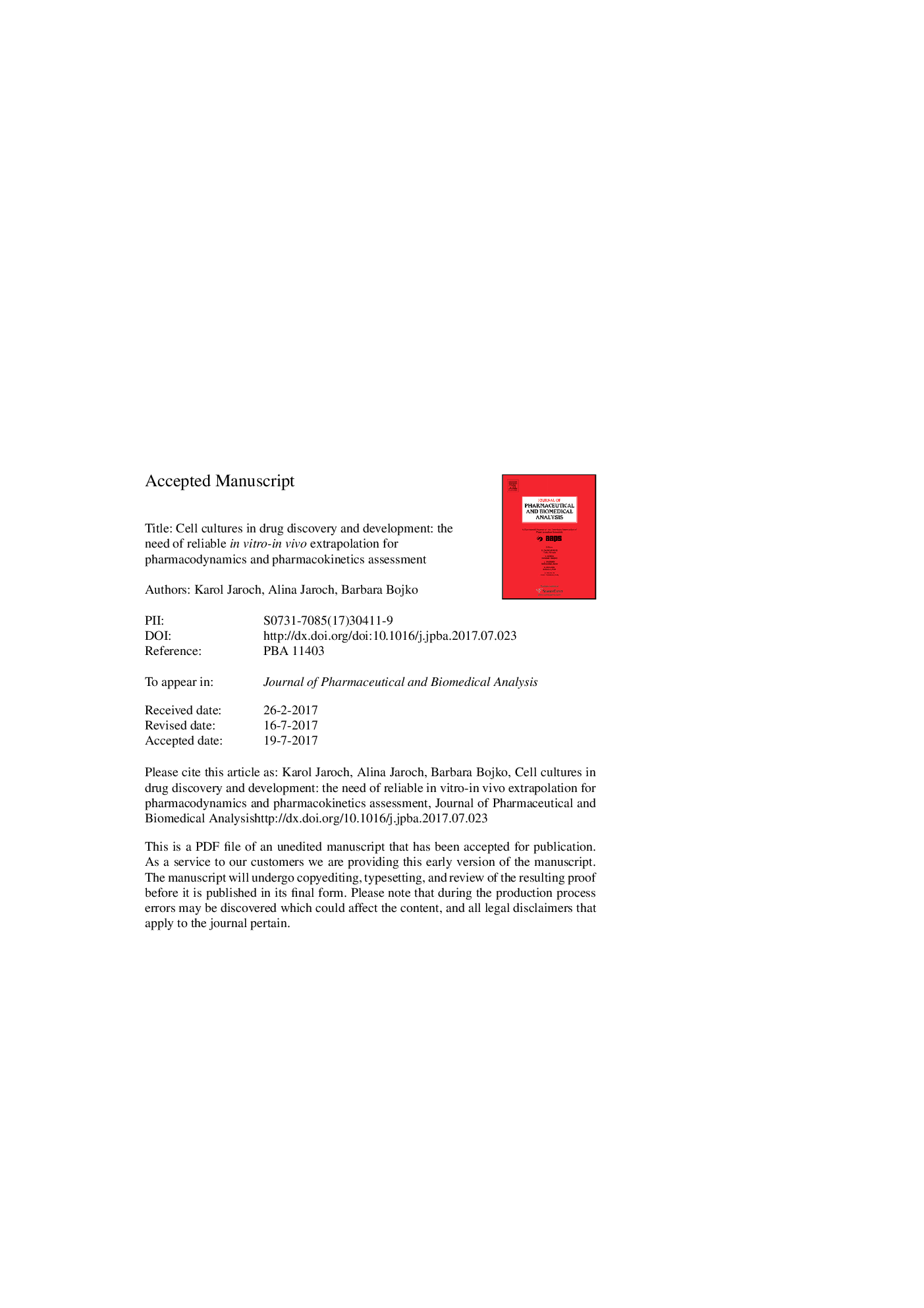| Article ID | Journal | Published Year | Pages | File Type |
|---|---|---|---|---|
| 7627709 | Journal of Pharmaceutical and Biomedical Analysis | 2018 | 43 Pages |
Abstract
Progress in in silico and in vitro methods can lead to better in vitro-in vivo extrapolation (IVIVE4) outcomes and have a potential to contribute towards a significant reduction in the number of laboratory animals needed for drug research. As such, concentrated efforts need to be spent towards the development of an HTS in vitro platform with satisfactory IVIVE features.
Keywords
Madin-Darby canine kidney cell lineDAPI3RsPBPKDDIMDCKII-MDR1OATPNOAELECCSPBK5-FUBDDCSIn vitro-in vivo extrapolationSHSY5YIVIVE3D cell culturesFDAhuman colon carcinoma cell lineTPZCaco-2HTSThree-dimensionalEMAADME3-(4,5-dimethylthiazol-2-yl)-2,5-diphenyltetrazolium bromide4′,6-diamidino-2-phenylindoleAuNPsMTTEuropean Medicines agencyOctChodrug-drug interactionTirapazamineabsorption, distribution, metabolism and excretiontwo-dimensionalEffective doseFood and Drug AdministrationBBBNeuroblastoma cell linehigh-throughput screeningPharmacodynamicspharmacokineticPhysiologically based pharmacokinetic5-fluorouracilphysiologically based kineticBlood-brain barrierGold nanoparticlesIn vitro-in vivo correlationIVIVCno observable adverse effect levelpeptide transporter 1organic anion-transporting polypeptidePept1Chinese Hamster Ovary cell lineOrganic cation transporters
Related Topics
Physical Sciences and Engineering
Chemistry
Analytical Chemistry
Authors
Karol Jaroch, Alina Jaroch, Barbara Bojko,
